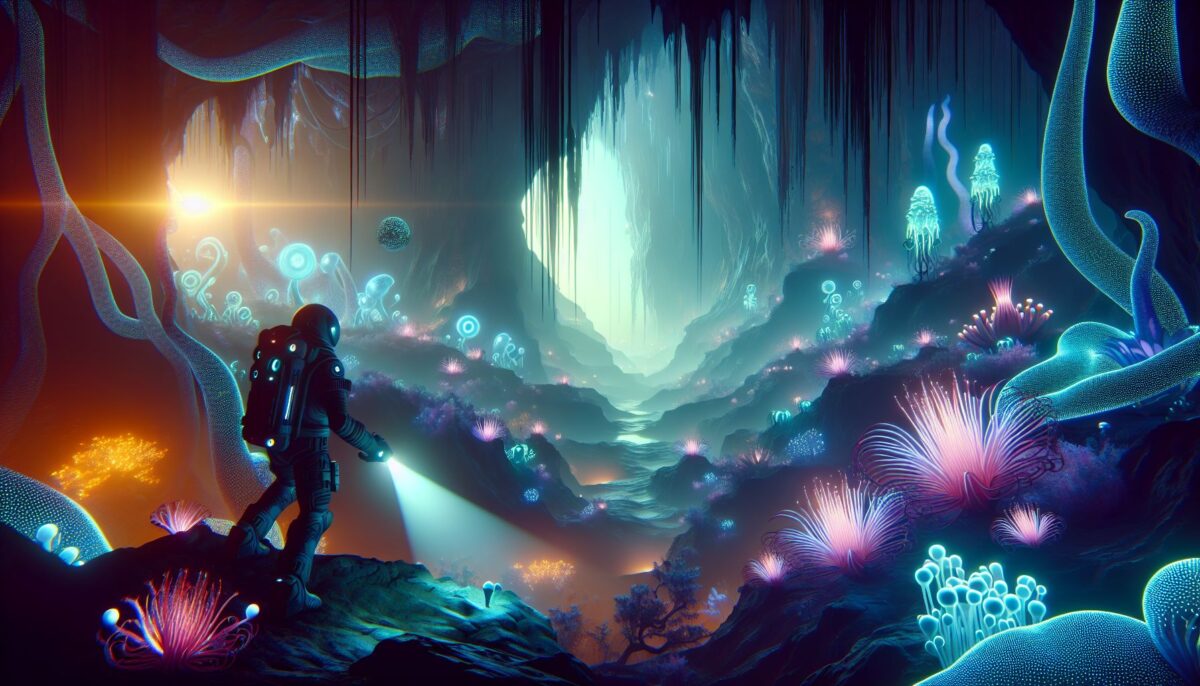Venturing into the enigmatic and unforgiving planet of Atropos, Returnal, developed by Housemarque and released on the PS5, presents an invigorating blend of roguelike mechanics with third-person shooter action. As Selene, the game’s protagonist, players are trapped in an ever-changing loop, striving to break free from the cycle of life and death while uncovering the mysteries of the alien landscape.
The process of piecing together Selene’s story and the planet’s cryptic history is reminiscent of putting together a jigsaw puzzle, where each run provides new pieces that gradually reveal the larger picture. This iterative learning experience is at the heart of Returnal‘s gameplay loop, and it’s this aspect that both captivates and challenges players.
Harnessed Chaos: Exploring Returnal’s Gameplay Mechanics
The gameplay of Returnal is a study in controlled chaos. Players must navigate a hostile environment filled with diverse and unpredictable enemies, learning attack patterns and adapting strategies with each death. With the game’s roguelike nature, no two runs are the same, as the procedurally generated world ensures each rebirth brings a unique array of challenges and rewards.
The game’s combat is responsive and exhilarating, encouraging an aggressive playstyle that rewards quick reflexes and strategic thinking. Selene is equipped with an evolving arsenal of futuristic weapons and abilities, which players can enhance through various upgrades and parasitic attachments, each with their own trade-offs. This risk-reward dynamic creates a compelling gameplay loop that encourages experimentation.
However, not all is perfect in the flow of combat. The occasional overwhelming odds might lead to moments of frustration, particularly in the early hours when players are still finding their footing. Additionally, some might find the lack of a traditional save feature daunting, as death wipes all progress, demanding players start from the beginning. This can be especially disheartening after a long and productive run.
An Alien Beauty: Aesthetic and Audiovisual Mastery
Visually, Returnal is a showcase of the PS5’s capabilities. The detailed environments, atmospheric effects, and smooth frame rates immerse the player into its alien terrains. From the dark, foreboding ruins to the vibrant, overgrown jungles, Atropos is a planet teeming with visual diversity and intrigue. This is further complemented by the haptic feedback and adaptive trigger functionality of the DualSense controller, creating a tactile experience that enhances the sense of immersion.
The soundscape of Returnal is equally impressive, using 3D audio to amplify the tension and adrenaline in triumphant fashion. Each bullet, enemy shriek, and environmental ambiance envelops the player, crafting an audio experience that is as haunting as it is beautiful. The game’s ability to use sound to build atmosphere and inform gameplay is an exemplary paradigm of audio design.
Nevertheless, the beauty of Returnal‘s environments can sometimes be a double-edged sword. The labyrinthine nature of Atropos can occasionally be confusing, with players potentially getting lost or inadvertently retreading the same areas due to the lack of a detailed map.
Narrative Nuances: Storytelling in an Ephemeral World
Roguelikes may not be renowned for their storytelling, but Returnal bucks the trend with a narrative that unfolds in enigmatic fragments, serving as breadcrumbs that spur the player onwards. Messages and memories of past Selenes, along with environmental storytelling, craft a story that is both compelling and cryptic. While some may find the non-linear narrative disjointed, others will relish the depth and engagement it offers, as they unlock the various secrets of Selene’s situation and the planet.
However, the slow drip-feed of narrative can test the patience of players more interested in a straightforward story, with critical pieces of the narrative puzzle often gated behind difficulty spikes or obscured by the random nature of the game’s world.
Intertwining Progress and Persistence: The Rogue Elements
Returnal introduces mechanics that slightly soften the blow of its rogue-like elements, such as permanent upgrades that persist through death, ensuring a palpable sense of progression. These permanent unlocks not only bolster Selene’s chances of surviving longer but also provide access to previously unreachable areas and secrets in earlier biomes.
While these persistent elements are a welcome departure from the genre’s insistence on starting from scratch, they can, at times, feel insufficiently rewarding. The grind required to obtain some of these upgrades may deter less persistent players, considering the significant challenge posed by the game’s enemies and environments.
Final Thoughts
Returnal stands tall as an exemplary title that pushes the boundaries of roguelike design with its fascinating blend of high-octane combat, enigmatic storytelling, and stunning audiovisual presence. While it may not be a title for the faint of heart due to its demanding nature and the occasional creeping unease of repetition, it is undoubtedly a game that showcases the potential of the next-generation gaming experience.
The allure of Atropos is not just in its viscera or otherworldly scenery; it lies in the seductive promise of mastery and understanding with each resurrection. For those with the patience and skill to endure its trials, Returnal offers a rich and rewarding experience that is not easily forgotten or surpassed.
In conclusion, Returnal manages to stride the delicate line between frustration and satisfaction with graceful agility. Its fusion of relentless gameplay, intricate progression systems, and an unwavering commitment to its atmospheric storytelling culminate in a game that is as challenging as it is enchanting. It is a testament to the brilliance that can emerge when developers dare to marry a seemingly unforgiving genre with AAA production values and innovation.
